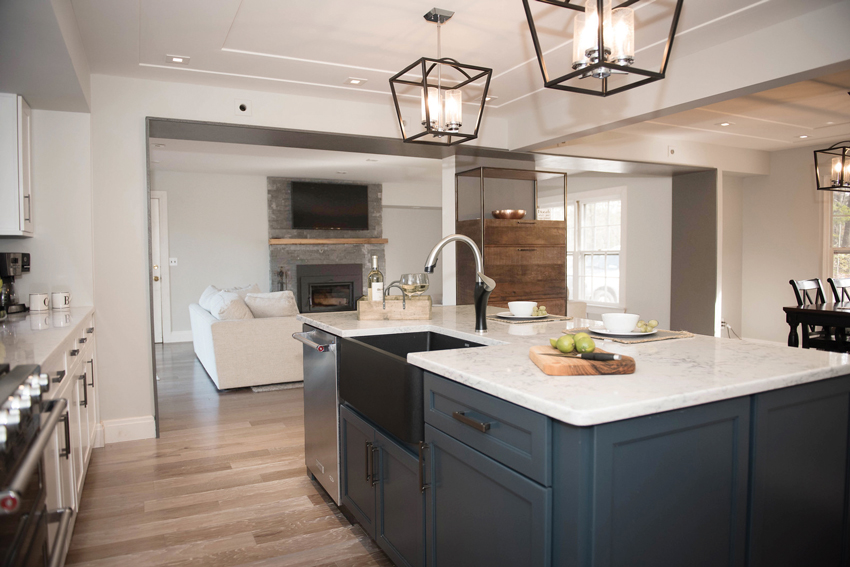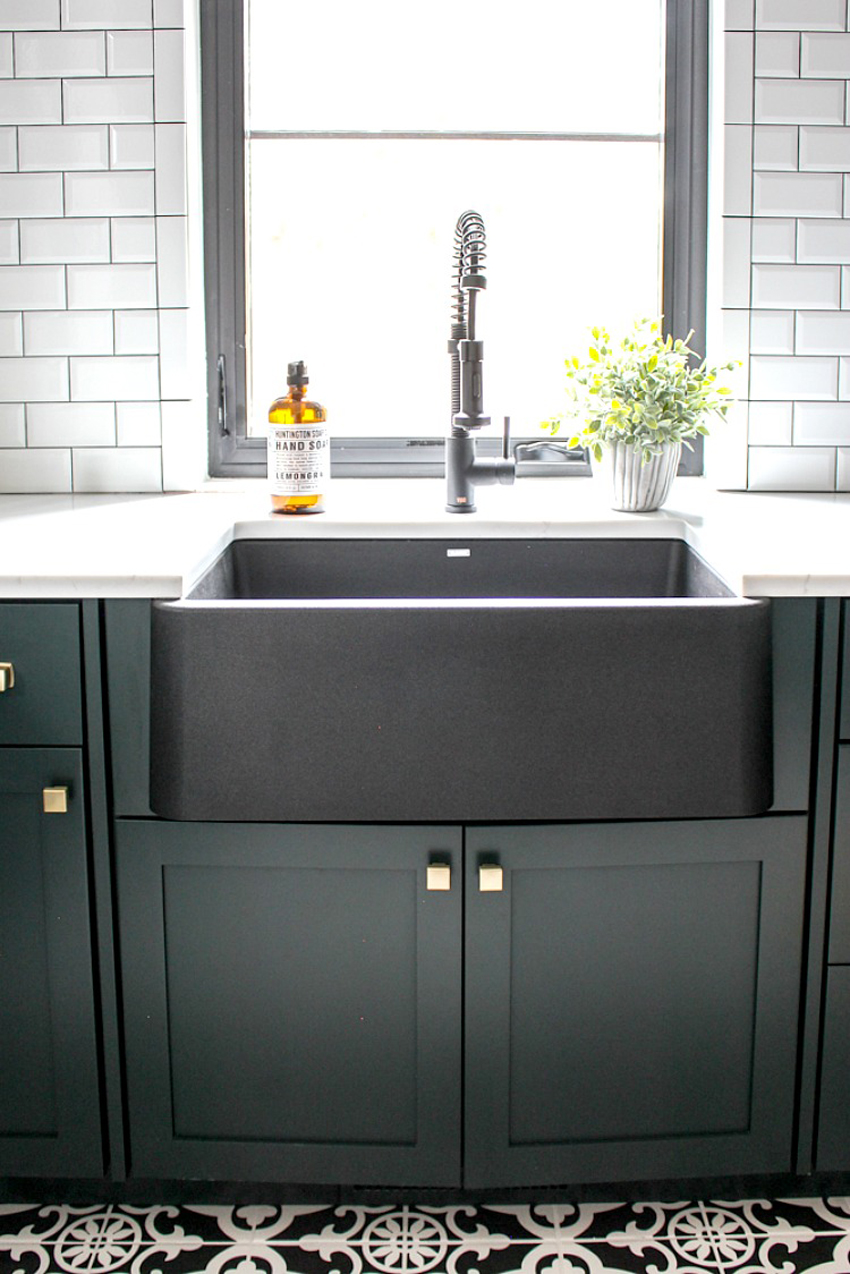In Living Color

Photo courtesy Michele Alfano Design
The modern sink has left behind the former color restrictions of stainless steel or white porcelain. Today, a wide variety of designs, sizes, and colors allow professionals to create the perfect kitchen, no matter what the style.
Removing Design and Welfare Boundaries with Color
Color can be useful in so many ways: from its simple aesthetics to its impact on mood, its ability to reflect personality and style, and its implications for health and welfare. Color is powerful, and design professionals—and the market itself—are increasingly recognizing and harnessing this power. Forecasting an annual color has become big business; nearly every paint company now names its color of the year. In a survey of paint companies, most of the colors of the year for 2019 are unsaturated, light colors. Clariant, a world leader in specialty chemicals, predicts that “colors become muted as consumers come to grips with a complex world and never-ending distractions. As people feel that things are spinning out of control, focusing on single tasks is critical. The color palette is simple: serene, soft, muted, and minimal colors.”13 These annual colors and associated palettes also help people “consider colors they may not have found on their own or felt confident enough to pick for their next paint project.”14
The modern sink has left behind the former color restrictions of stainless steel or white porcelain. Today, a wide variety of designs, sizes, and colors allow professionals to create the perfect kitchen, no matter what the style. Kitchens can now maximize an occupant’s style through a cast of colorful sink options that bring personalized design front and center. Intelligent color palettes reflect and support the people and activities within a structure.
Yet color plays not only plays a role in aesthetics and mood, as it also offers as an important means of integrating safety and functionality. While color can certainly create a visual celebration, it also enhances welfare and safety by defining workspaces and crafting optical clues that enhance occupant welfare. A contrasting sink color alerts occupants to a shift in work surface and establishes clear work zones. Using color in the kitchen enhances welfare and safety for aging-in-place and multigenerational homes, particularly as the dominance of open floor plans removes traditional work-zone transitions.
Color also has a role to play in sustainability. Though color is often regarded as a shifting trend, thoughtful selection of a palette enables a kitchen sink to offer an aesthetic highlight while also providing design longevity. A classic, neutral color scheme acts as an investment, allowing clients to avoid buyer’s remorse and ensuring an interior design that will never grow old.
Amanda Voss, MPP, is an author, editor, and policy analyst. Writing for multiple publications, she also currently serves as the managing editor for Energy Design Update.
END NOTES
1“Survey Results: Trend Stories in Kitchen Design & Color.” Frank Advertising. 2018.
2Houzz Research. “2019 U.S. Houzz Kitchen Trends Study.” Houzz. 16 January 2019. Web. 29 March 2019.
3Little, Shelley. “Why Neutral Colors Are Best.” Freshome. 21 October 2014. Web. 29 March 2019.
4Moses, Nalina. “Environmental psychology: Building with feeling.” The American Institute of Architects. 14 December 2012. Web. 29 March 2019.
5Sethares, Bill. “Blue Sky Science: Why do some colors make you feel emotion?” Wisconsin State Journal. 25 July 2018. Web. 29 March 2019.
6O’Connor, Dr. Zena. “Colour in the built environment: Beyond aesthetics.” Resene Continuing Professional Development. Web. 29 March 2019.
7“Aging in Place Guide for Building Owners: Recommended Age-Friendly Residential Building Upgrades.” Mayor Bill de Blasio, NYC Department for the Aging, AIA New York, and Age Friendly NYC. July 2016, revised September 2017. Web. 29 March 2019.
8Hunter, Susan. “Design Resources: DR-01 Architectural Wayfinding.” IDeA Center, University of Buffalo. 2010. Web. 29 March 2019.
9Evans, G. and McCoy, M. “When Buildings Don’t Work: The Role of Architecture in Human Health.” Journal of Environmental Psychology. 1998.
10“Aging-in-Place Remodels Taking Off.” Behr Pro. Web. 29 March 2019.
11Weisman, J. “Evaluating Architectural Legibility: Way-Finding in the Built Environment.” Environment and Behavior. 1 March 1981. Web. 29 March 2019.
12“Aging-In-Place Remodeling Checklist.” National Association of Home Builders. Web. 29 March 2019.
13Dreamstime. “Trending Colors for 2019.” Medium. 29 January 2019. Web. 29 March 2019.
14Stewart, Jude. “The Big Money Behind Naming A ‘Color of the Year.’” Fast Company. 13 November 2017. Web. 29 March 2019.
 |
BLANCO has passionately elevated the standards for luxury sinks, faucets, and decorative accessories. Proud of its European heritage and award-winning German engineering, BLANCO has been committed to innovative design and unsurpassed service since 1925. Dedicated to uncompromising quality, every sink is closely inspected many times before it receives the BLANCO name. www.blanco.com. |









